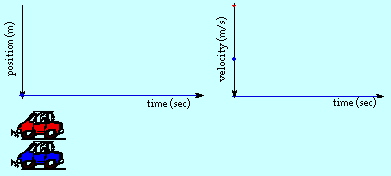Mechanics: 1-Dimensional Kinematics
1-Dimensional Kinematics: Audio Guided Solution

Extra Problem 14:
A red car moving at 61.9 mph passes a blue car moving at 37.3 mph. (Use 1609 meters = 1 mile when converting to meters/second.) Seeing a stopped car in his lane up ahead, the driver of the red car applies the brakes just as he passes the blue car which causes the red car to slow down to a stop by losing 4.67 m/s every second. How much time (in seconds) passes before the two cars are side-by-side once again?
Audio Guided Solution
Read About It!
Get more information on the topic of 1-Dimensional Kinematics at The Physics Classroom Tutorial.
Return to Original Problem Set
Return to Index of Extra Problems
Return to Overview
Habits of an Effective Problem Solver
An effective problem solver by habit approaches a physics problem in a manner that reflects a collection of disciplined habits. An effective problem-solver...
-
...reads the problem carefully and develops a mental picture of the physical situation. If needed, they sketch a simple diagram of the physical situation to help visualize it.
-
...identifies the known and unknown quantities in an organized manner, often times recording them on the diagram iteself. They equate given values to the symbols used to represent the corresponding quantity (e.g., vo = 0 m/s; a = 4.2 m/s/s; vf = 22.9 m/s; d = ???.).
-
...plots a strategy for solving for the unknown quantity; the strategy will typically center around the use of physics equations be heavily dependent upon an understaning of physics principles.
-
...identifies the appropriate formula(s) to use, often times writing them down. Where needed, they perform the needed conversion of quantities into the proper unit.
-
...performs substitutions and algebraic manipulations in order to solve for the unknown quantity.